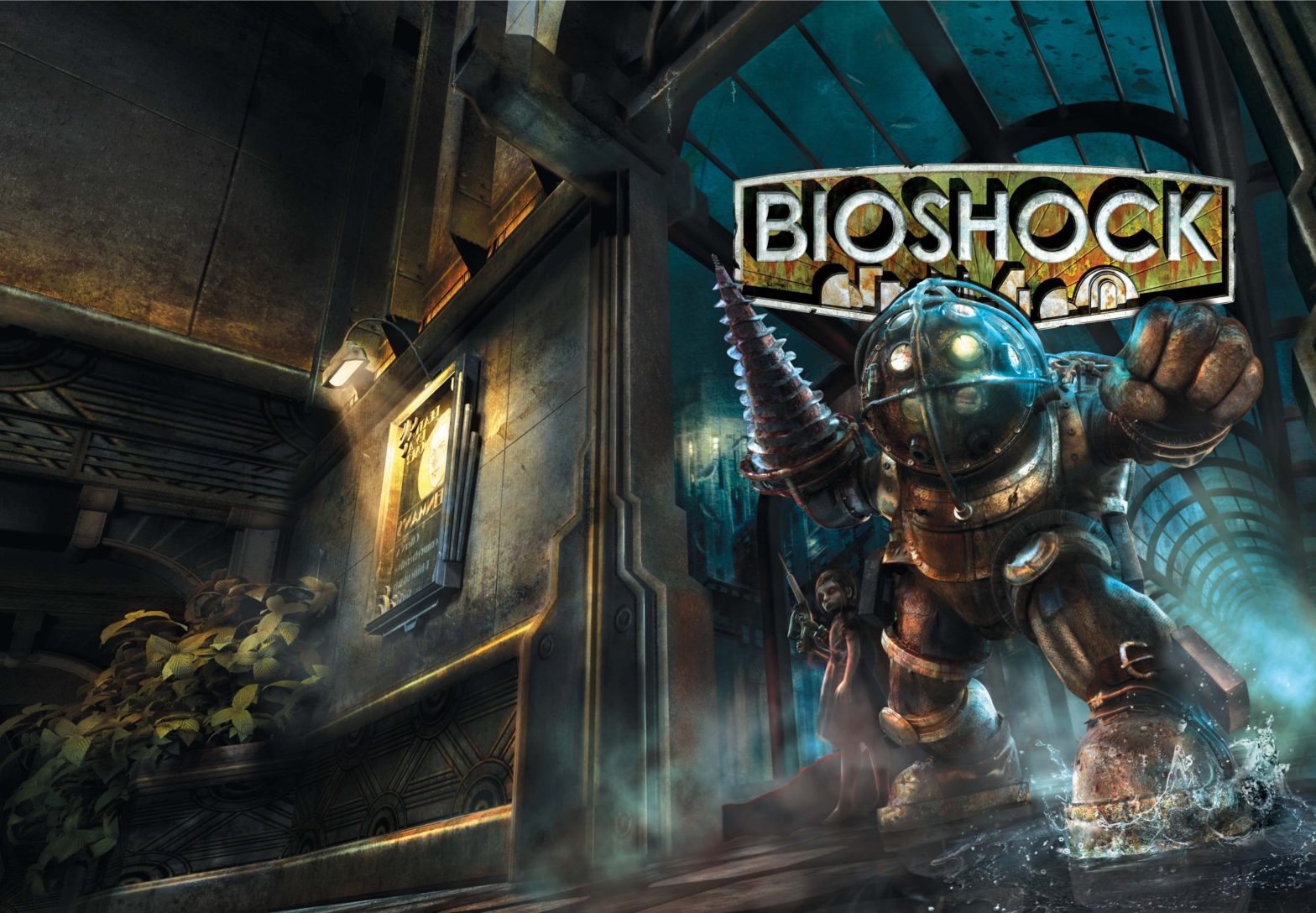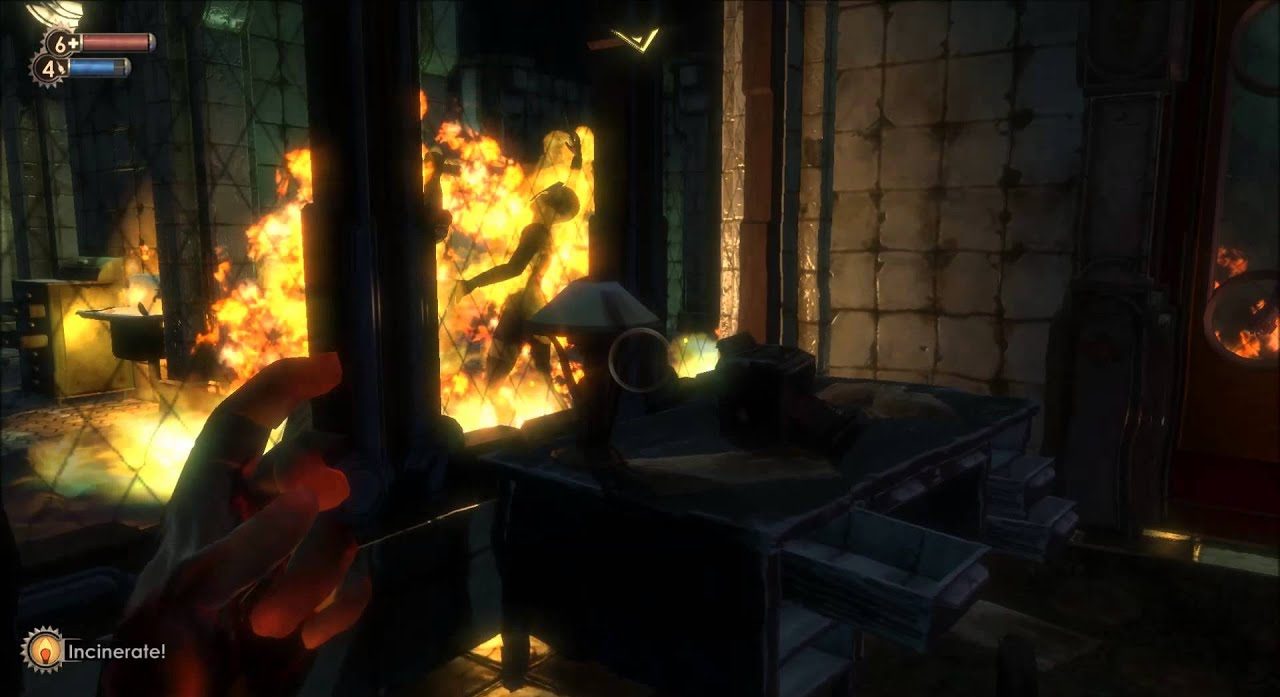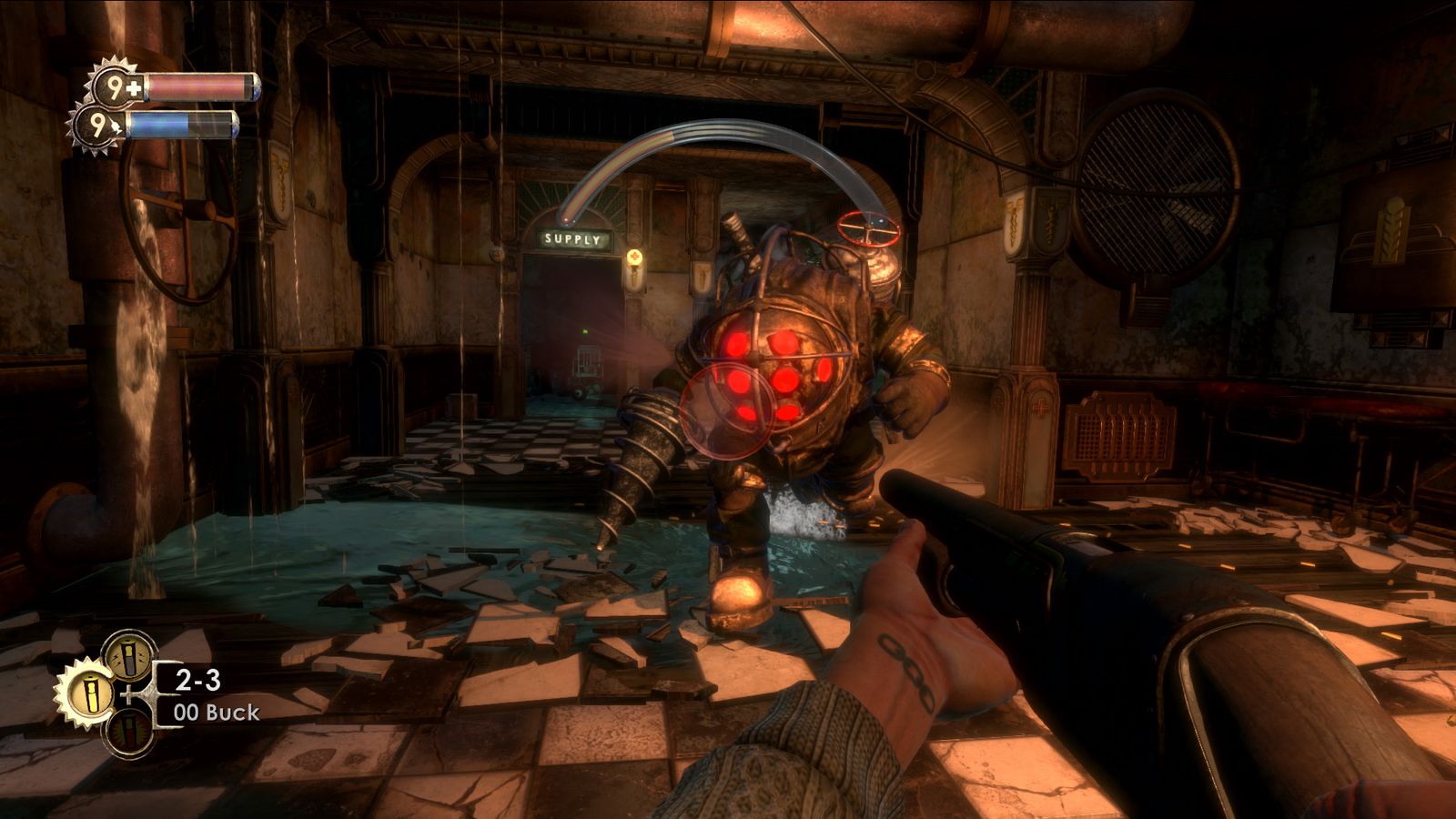While scrolling through Twitter a couple of months back, two familiar phrases which I hadn’t heard in quite some time, piqued my interest. “We all make choices, but in the end, our choices make us.” My first thought was that it probably is some fan-made post. Looking into it a bit more, I realized that it is an official announcement regarding the partnership of 2K, Take-Two, and Netflix to produce a Bioshock film adaptation.
The idea of seeing a “real-life” Big Daddy trying to keep his little sister safe on screen gave me the chills, filling me up with excitement that made me reminisce about the city of Rapture and its citizens. So, after a while, I launched the game and revisited this underwater “paradise” once more. To supplement this, reading a retrospective of a friend came full circle, which ultimately spurred me to try and write my own for Bioshock. So hey, would you kindly read on?
Setting the tone.
The year is 1960 and we find ourselves in the shoes of a man named Jack, on board a plane that’s flying over the middle of the Atlantic Ocean. While unconcernedly smoking a cigarette and resonating with an old photograph in hand, the plane crash-lands in the middle of the sea and Jack seems to be the sole survivor. After swimming to the surface, a distant lighthouse, like a deus ex machina providing shelter, can be seen. Upon entering said lighthouse, a large statue of a man called Andrew Ryan welcomes anyone that enters. Reluctantly using what is called a “Bathysphere”, Jack descends below sea level and begins his journey to this seemingly utopian underwater civilization.
As soon as the Bathysphere reaches its destination, Jack is welcomed by a Splicer. The most common of the enemies one can find in Rapture, who tries to crack open this mini-submarine and ultimately kill him. A man makes contact through a shortwave radio, while you are repelling the Splicer, and introduces himself as Atlas. Declaring he will be Jack’s protector from now on, if he helps him find and rescue his family that has been taking shelter somewhere in Rapture. This marks the beginning of the amazing Bioshock story that Ken Levine has in store for us.
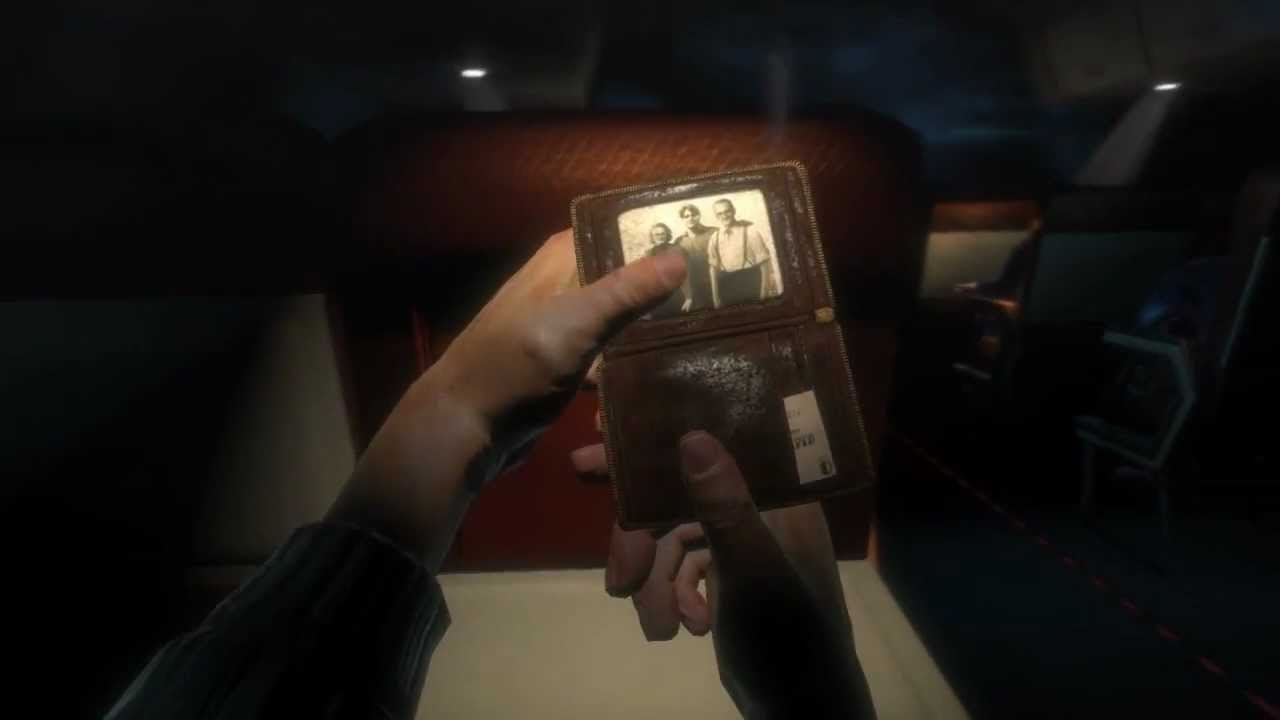
The people of Rapture.
From this point on, Jack, with Atlas by his side guiding him and politely asking for numerous things to be done, tries to save Atlas’s family from this godforsaken city. So, you find yourself exploring this underwater human achievement while trying to locate its founder, Andrew Ryan, in order to make it out alive. Through the course of this twisted journey, the player will come to learn about Rapture’s true nature, its citizens, and how this once ideal and prosperous world fell to this unimaginable state of ruin and chaos. This is done by using audio diaries scattered across the city, left behind by the same people who lived there.
These people were scientists, artists, and all kinds of things, every single one with their ambitions, convictions, goals, and personal lives that little by little unravel the story. With twists and hints even from the beginning of the game. Personalities like Dr. J.S. Steinman, a renowned plastic surgeon obsessed with making his patients beautiful… in his own way. Or Sullivan, my personal favorite, the head of security for Andrew Ryan’s Private Forces who would do anything for the man. Or even Dr. Brigid Tenenbaum, who is obsessed with the possibilities of genetic engineering and would cross any moral or ethical line to achieve what she had set her mind to.
All this extensive attention to detail that was put into these main and side characters’ stories of Bioshock, in combination with the outstanding voice acting from each one of them, made these characters not only believable and distinct but also quite frightening. That is because their convictions are relatable and understandable, since at their core, they are all worthwhile. But then again, without having any kind of moral and ethical limits, things can get quite out of hand.

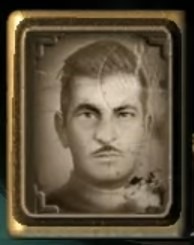

The story of Rapture.
Rapture is an underwater city created by Andrew Ryan, a businessman, presented as a figurehead for objectivism. With experiences in Russia and the US, he grew contempt for the dominant socio-economic structures of the worlds of capitalism and communism with specific social welfare programs. Thus, he gathered the brightest minds from around the world, and with their help, he was able to achieve his goal and create the impossible. Create Rapture.
A city at the bottom of the ocean, where no government would entitle the “sweat of your brow” to anyone else but yourself. A place where no morals or ethics would apply to artists, scientists, and doctors. And at first, it seemed to be working, seeing as how all these scientists were making groundbreaking discoveries. Ultimately allowing Rapture to be years ahead of the surface world in technological and biological advancement. But by taking away any sense of moral or ethical restrictions, these advancements came at a terrible cost.

ADAM: Blessing or a curse?
During the creation of Rapture, a particular sea slug was discovered at the bottom of the ocean that produced a genetic material, called ADAM. Scientists used and experimented on ADAM and were ultimately able to change the genetic code of humans. This led to the creation of Plasmids, some kind of superpowers anyone could get. Since ADAM becomes extremely addictive over time, the demand among the citizens for these Plasmids exceeded any expectations, but the city was not able to supply said demand.
In response, a gangster called Frank Fontaine seized the opportunity and with the help of Tenenbaum, created the Little Sisters. These pale and ghost-looking little girls, were used to gather ADAM from corpses, in order to make up for the shortage. As Fontaine’s company supplied the ADAM and manufactured the plasmid’s demand, his power in Rapture grew. He decided to attack Andrew Ryan but failed and was killed in the altercation. Following his death, Ryan seized and nationalized Fontaine’s company, which many saw as a betrayal of Rapture’s founding principles, while ultimately taking full control of the city and its plasmid factories.
The beginning of the end.
At the same time, another thorn in Andrew’s side started growing. His name was Atlas, the charismatic champion of the poor. He started protesting against the capitalization of Fontaine Futuristics. He attacked numerous of Ryan’s factories and he liberated Little Sisters from the orphanages where they were imprisoned. This drove Andrew Ryan to perform inhumane experiments on subjects to surgically graft them into massive diving suits. He also brainwashed them into protecting the Little Sisters at all costs. These inhumane experiments came to be known as Big Daddies.
Having lost too much ground to both Fontaine and now Atlas, Ryan starts to compromise every single founding principle of Rapture in an effort to reduce their influence. Either by ordering the assassination of an artist that simply criticized him. Or by legislating the death penalty for anyone caught smuggling from the surface.
After Atlas gathered enough support from the working classes of Rapture, he ordered an attack on Andrew and the city’s elite in 1958 during a New Year’s Eve party. This led to the ignition of a civil war among the factions of the city that would eventually see Rapture’s downfall. The remaining survivors barricaded themselves away as Splicers, Little Sisters, and Big Daddies. They ran unrestrained, destroying and leaving the entire city in a state of ruin. And that’s where you, as Jack, come into play as you crash land outside the lighthouse.
The underwater dystopia, and its unique art design.
Rapture is one of the most iconic cities depicted in the videogame medium, and for good reason. Keeping in mind that this is a 15-year-old game, the visuals were never the best. But the entire world of Bioshock was so meticulously crafted by the art design team that made them look years ahead of their time. From the Medical Pavilion, Rapture’s dilapidated medical center run by Steinman, to the green and “full of life” forest of Arcadia which provided the oxygen for Rapture. The fisheries, a cigar shop, a bar, and a theater. Every inch of this city is so different from the next or previous one but also feels like a real place. A place where people could be spending their time at. Rapture just works.
Or, to be more precise, Rapture used to work. Now, the whole place is in a state of ruin and destruction after the Civil War. Chaos is everywhere, with cracks on walls, and water dripping from all possible spots, creating puddles around every corner, while the ambient sound of this semi-abandoned city still creeps inside my head. Every step you make, every action you take, or even when you’re just exploring as silently as possible, contributes to this masterpiece of a soundscape. Little by little this appends to the immersiveness of Rapture. Not only is there a strong feeling of melancholy, as the imagination runs wild trying to visualize how this glamorous and high-class city would have looked in its glory. Now seeing it, having fallen so far from grace. But also, a feeling of utter disgust at its current state. Which can further be felt with the people of the city, their extremism, and the inhumanity they showed while following their pursuits without limits.
Rapture is a libertarian-fantasy world made to look so amazingly real while also achieving this horror effect brilliantly. Thanks to its ambience and the spaces of suspenseful emptiness filled by the player’s imagination, which is, by the way, completely optional. Levine cited in the commentary that the rich world created in Rapture is almost exclusively optional for the player to interact with. The same goes for the audio diaries that explain through bits and pieces the creation, the life, and the downfall of Rapture. The gameplay will not change if the players decide they don’t want to interact with all these extra components, but the polemical feature will dissipate.
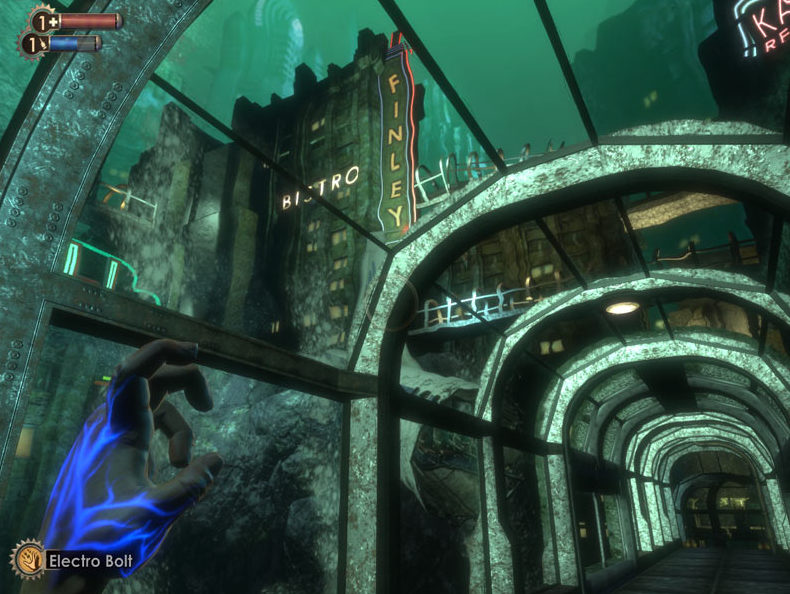
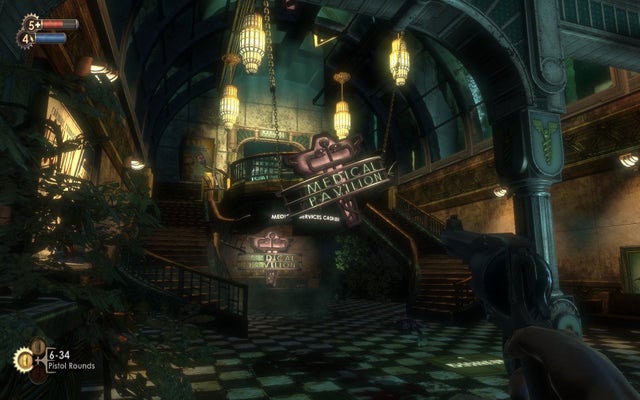
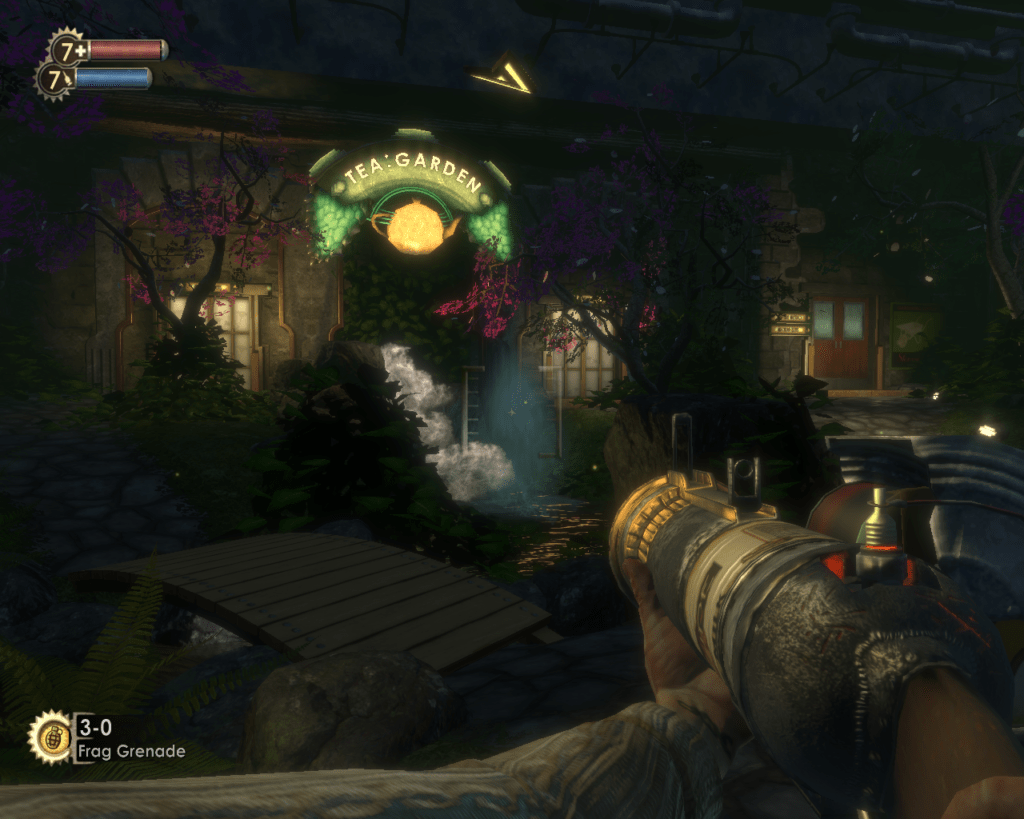

Turning fun into frustration.
When I first played “Bioshock”, my knowledge was very limited in terms of gameplay mechanics. As I grew older and technology evolved, so did the mechanics. Making me have higher standards when it comes to all these little things that seemed so insignificant back then. Having said that, during my playthrough of the game, I found myself struggling, and getting somewhat infuriated with its mechanics at times. This emptiness of Rapture’s world also translates into supplies being scarce, strong-arming you to be very careful with how you use them.
The combat aspect of the game, and especially the shooting mechanics, are so bad at times that make the game unbearable to some degree, even though you are presented with numerous options of either Plasmids or guns. It gives you that false feeling that you can try different approaches, but you come to realize that only a couple of guns and Plasmids respectively are worth using. Inventory management, on the other hand, becomes so dull that you eventually come to forget there is even such a thing.
One of the main attributes of the game is its Plasmids. These genetically modified “beverages” allow you to alter your genetic code and acquire superpowers. I mean, who wouldn’t want that? There is quite a long list of Plasmids that are available to the player, allowing various play styles to be implemented. In combination with the multiple guns that can be found throughout Rapture and their respective “special ammo”, this goes one step further. At first, this feels intriguing as you’ve gone through thick and thin to discover upgrades for both yourself and your guns, just to make you feel powerful. But then out of nowhere, all the enemies become dramatically stronger, negating at once all the hard work and effort you put into reaching that stage.
In my opinion, the only time the combat really gets to shine, even amongst all these inconveniences, is when you get to fight a Big Daddy. By just the thought of it, I get frightened to some degree, having to check if I have enough ammo, medkits, and the supplies to take him on, and ultimately down. These huge, genetically altered monstrosities, created just to protect their Little Sisters, armed with drills, rivet guns, or rocket launchers, are no joke and get the heart pumping during combat.
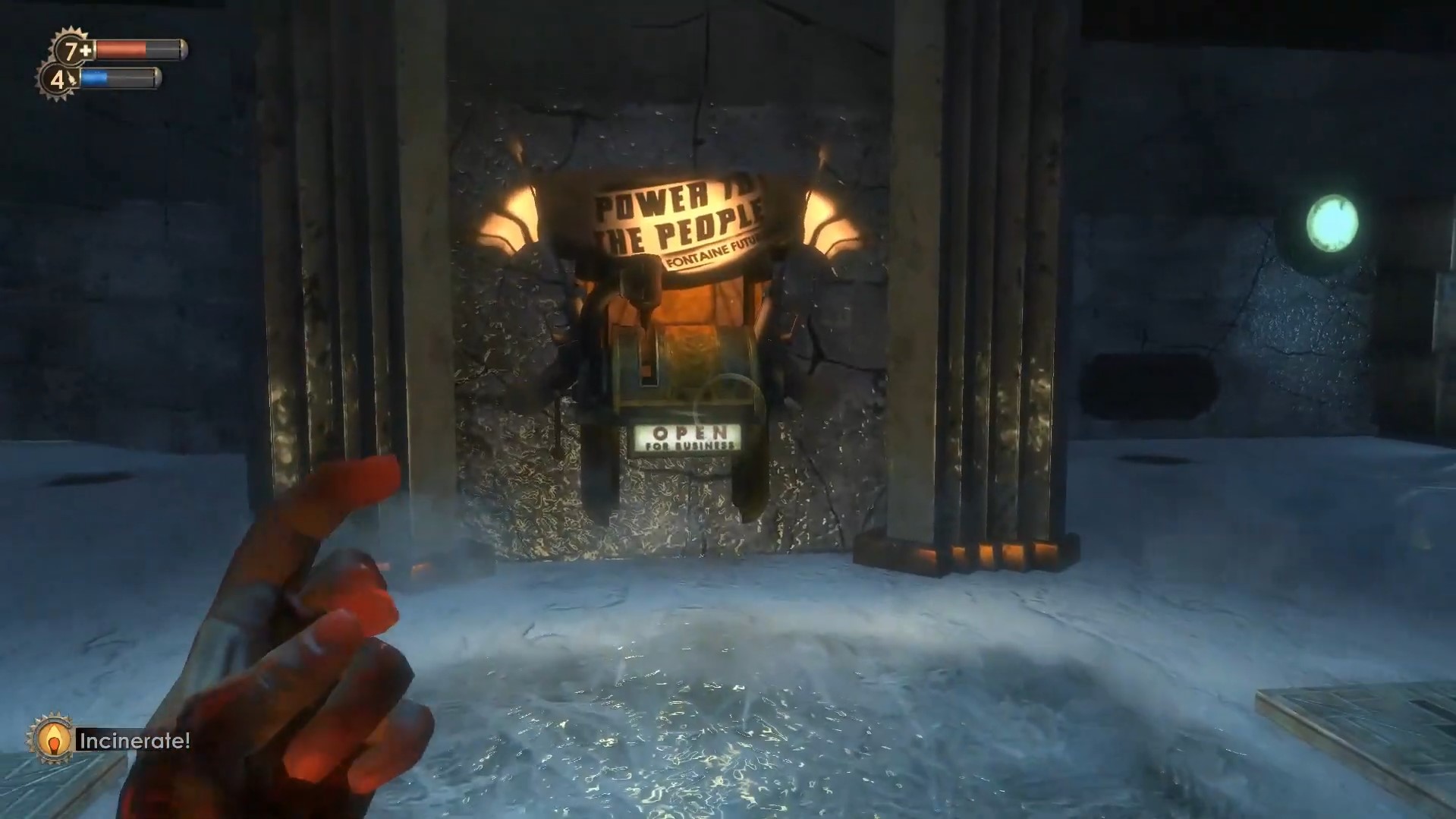
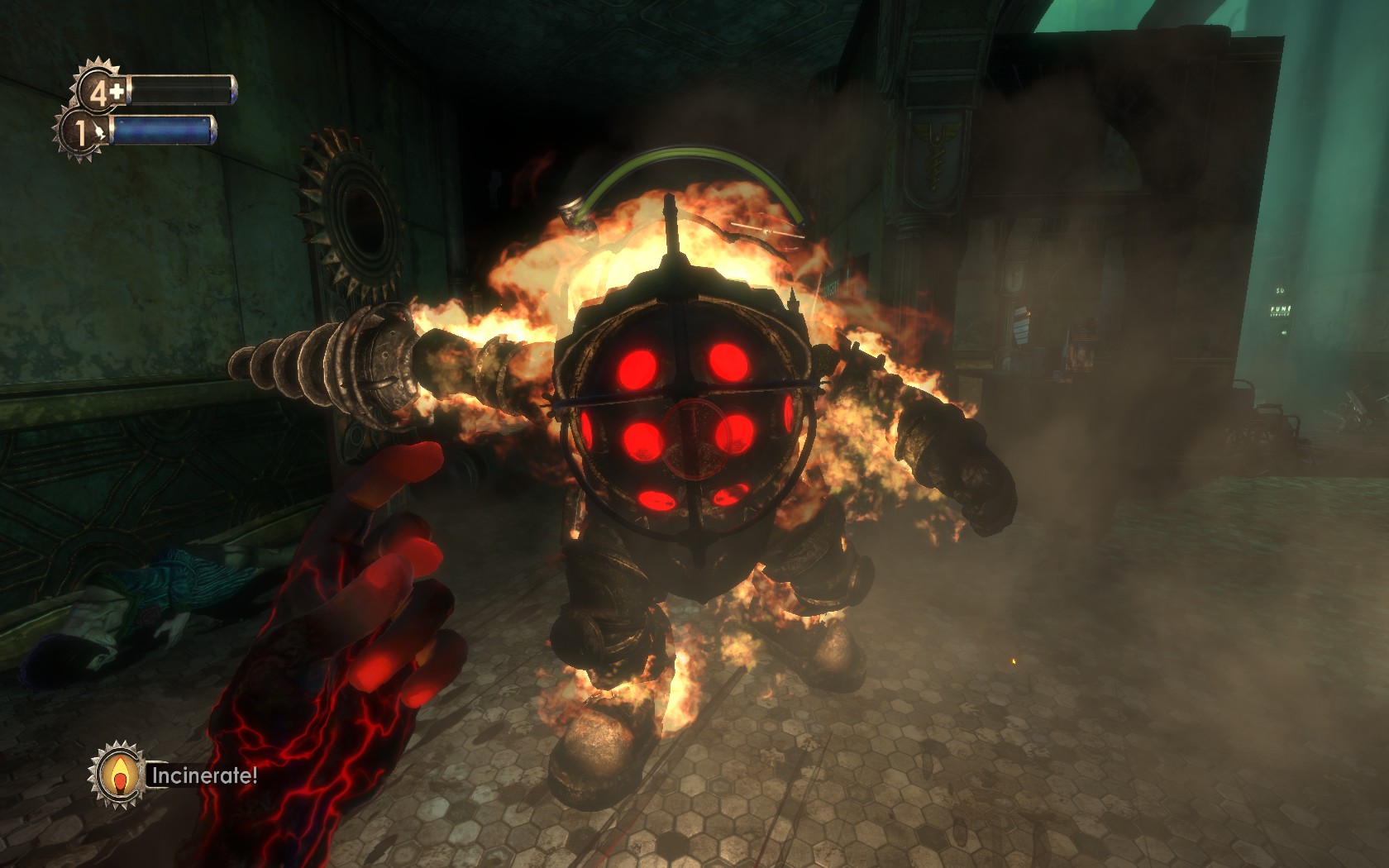
Would a movie work?
After finishing the story, I realized how breathtaking the game actually is. Not so much from a gameplay standpoint, but rather from a groundbreaking, for the time at least, way of narrating a story through audio diaries. An audio log’s functional objective is to provide context, but it does so in spades. The “Bioshock” audio diaries’ storytelling turns out to be their defining characteristic. A storytelling approach that in the end becomes far more effective than the actual linear story the game is keen on telling.
An approach that does not allow the story to be pushed in your face, but rather wafting it before scuttling it away and urging you to follow it… or not, it is up to you to decide after all. By mixing first-person action, with a deep and perplexing story-driven campaign, and treating subjects as complicated as morality, politics, and science seriously. They created a dystopian-bordering-on-horror adventure, that kept players on edge of their seats from start to finish.
Having said all that, recalling how I came to play this game after all these years in the first place, I feel a bit wary as to if this film adaptation from Netflix, is going to be good. Point is that you can’t tell a story like this through another medium, nonlinearly, utilizing audio diaries and environmental details. And you can’t create a world with so much detail, without exposition dumps and walls of text, in a movie or a book. Even if “Bioshock” isn’t a perfect game, it is a perfectly crafted world, with an even more intriguing story, which in my opinion, is something way more uniquely valuable for video games. But how can this be translated into a movie, remains to be seen. So Netflix, would you kindly not disappoint?
